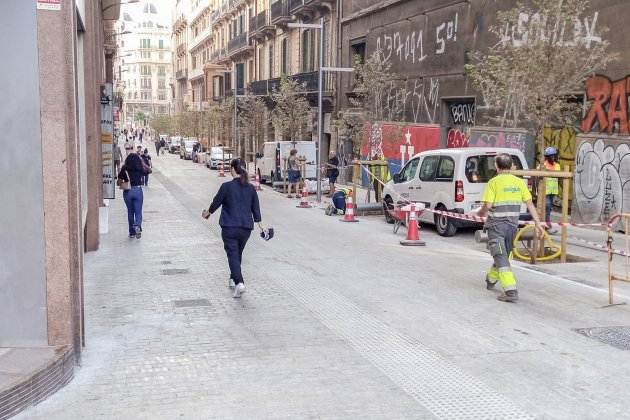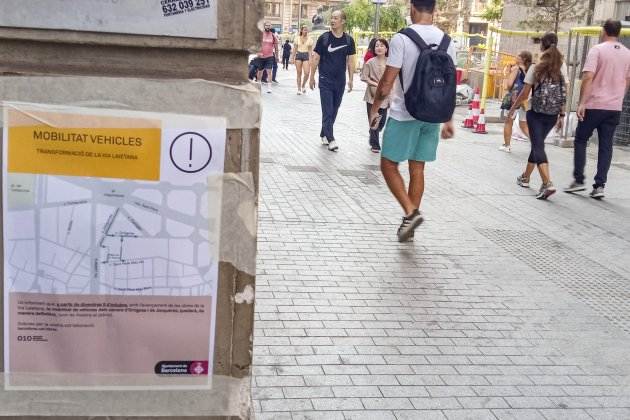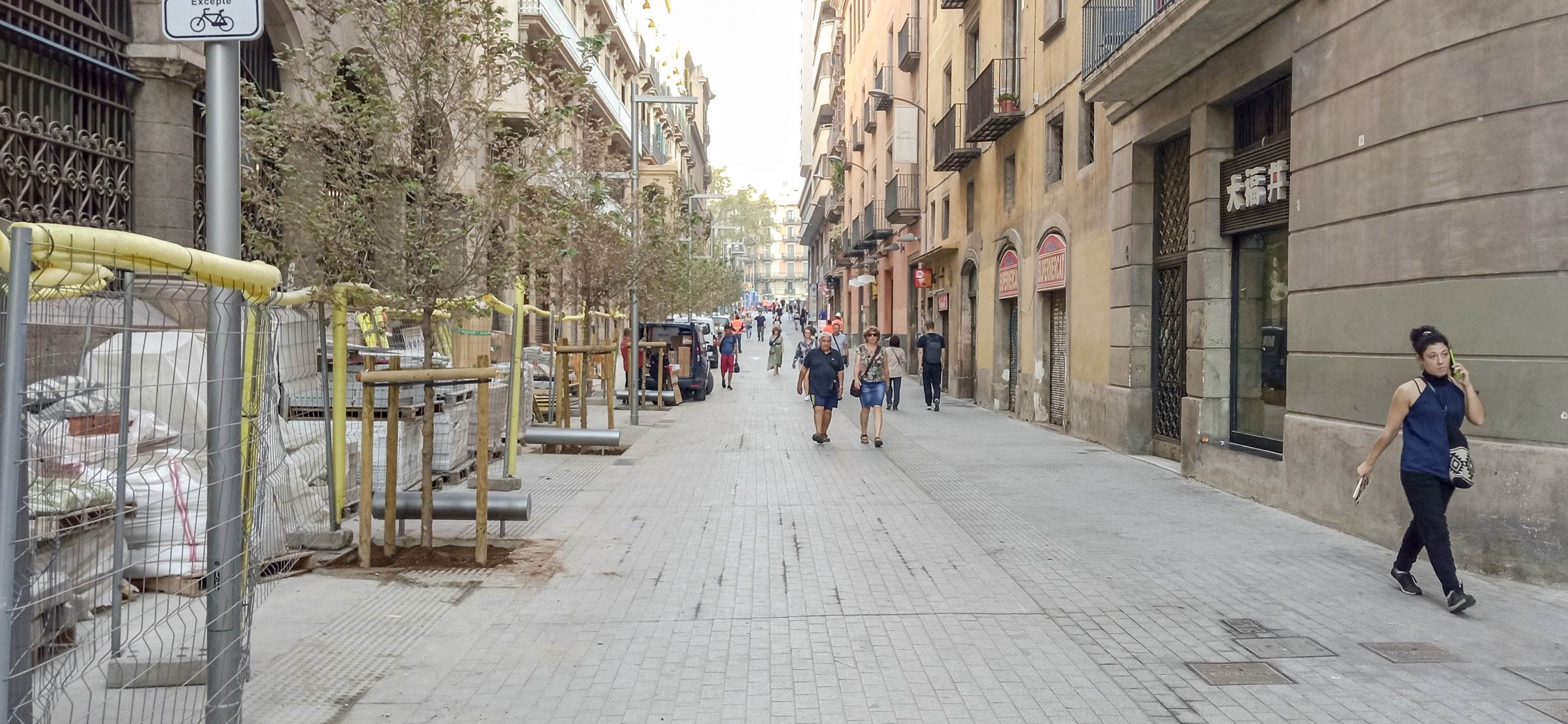Carrer de les Jonqueres in Barcelona, which runs between Via Laietana and the Besòs* end of Plaça d'Urquinaona, is barely 150 metres long, but historically it has been one of the busiest and bleakest streets in the whole of the city. All of a sudden, however, the remodelling of Via Laietana has turned it into an unexpected green axis, a peaceful street with trees that invites you to stroll where, just a few days ago, there was an asphalt dragstrip that absorbed all the Via Laietana traffic heading uptown, cars, buses and motorbikes, with additional discomfort from the fact that the width of Carrer Jonqueres is ten metres, while that of Via Laietana is twenty.
The result was two lanes of traffic - in fact, before that, three narrow lanes - and two ledge-like sidewalks on a grey and dreary street, on which the buildings had long lost their original colour due to the intensity of the air pollution. Despite this, it was historically a very commercial street, marked by the presence of the famous Casa de las Mantas, a bedding and curtain specialist that opened in 1940 and earned its place in the popular memory of many Barcelona residents thanks to an catchy radio jingle that reminded us that the establishment was at Junqueras 5, al ladito de la Caixa - next to La Caixa. It survived until 2012.

More recently, the street lost a certain commercial energy, especially on the Llobregat* side, marked by a series of disused buildings, while on the Besòs corner it has maintained its vitality, with a few businesses de tota la vida, like the lighting shop La Casa de las Lámparas, right on the corner with Plaça Urquinaona. Also, on this street was one of the last stores specializing in typewriters, now gone. Even with all this, the continuous traffic, plus the narrowness of the street and the height of the buildings, which made it seem even narrower, did not exactly invite pedestrians to pass through and even less to hang around, given that there were no benches, let alone trees.
The definitive mobility plan
That noisy and traumatic past, however, is now history. The main part of the redevelopment - that of Via Laietana - still continues, but the pedestrianization of Carrer Jonqueres is already a reality. Some work carries on, given that archaeological remains were found as the works were undertaken, but since last Friday the definitive mobility plan for the street has been applied, with traffic restricted to residents, car park users, loading/unloading and emergency services, with a new feature: from now on, the traffic goes downhill, in a seaward direction, with the possibility of turning onto Carrer Ortigosa, which maintains its Besòs direction, or turning onto Carrer de Ramon Mas, passing by the Palau de la Música Catalana and into Carrer de Sant Pere Més Alt.

With traffic thus reduced to the bare minimum, one of the streets most avoided by Barcelona residents, at least by pedestrians, is now beginning a new life as a tranquil route which could even entered the realms of the first-class streets. Of course, this will not save it from the same dangers that other quietened-down streets already suffer, such as the risk of gentrification and the increase in rental prices, an aspect that is already being experienced in Carrer Consell de Cent.
New cycle lane on Via Laietana
Likewise, the first section of the new cycle lane on Via Laietana has also been opened, for cyclists heading uptown, between Plaça d'Antoni Maura and Plaça d'Urquinaona, that is to say, in the landward section where the works are almost finished. The new lane is one-way and runs uphill. It is located on the Besòs side of the road and has separators to segregate it from traffic. This new cycle path connects with the three new sections of cycle path that have been created in Plaça d'Urquinaona and that have also been opened, with the aim of facilitating cycling connections in this part of the city.
*Translator's note: The Besòs and Llobregat rivers, which very roughly define the two lateral limits of Barcelona city, are commonly used for orientation when giving directions among locals, and are used here. Thus, in Barcelona, when you are facing seaward, direcció Besòs means to your left, and direcció Llobregat is to your right. The other two physical limits of the city used for orientation are the sea (mar) and the inland Collserola mountain range (muntanya), hence the phrases direcció mar, and direcció muntanya.

